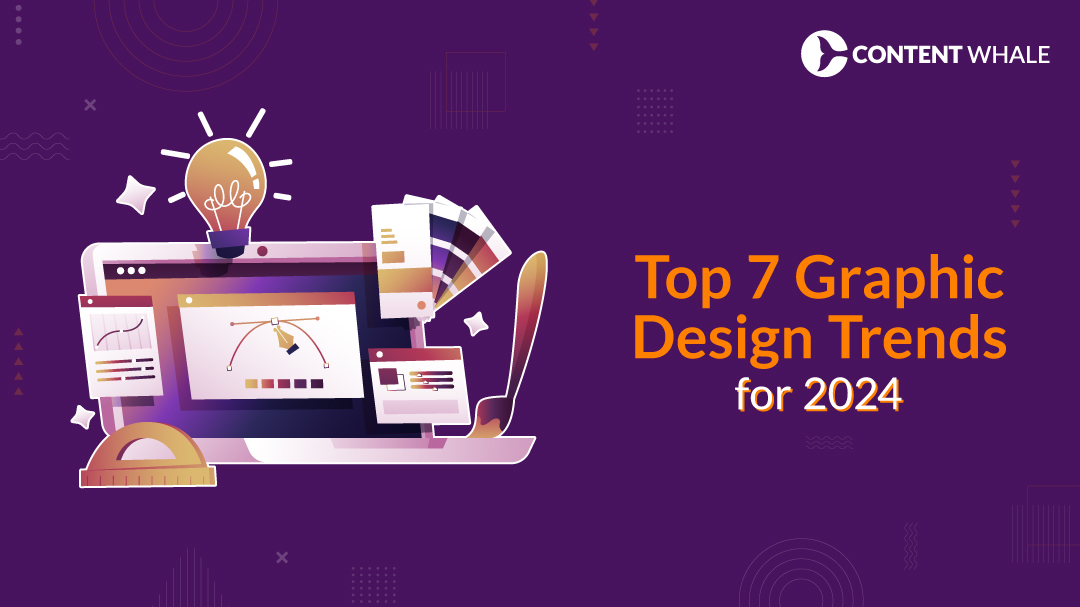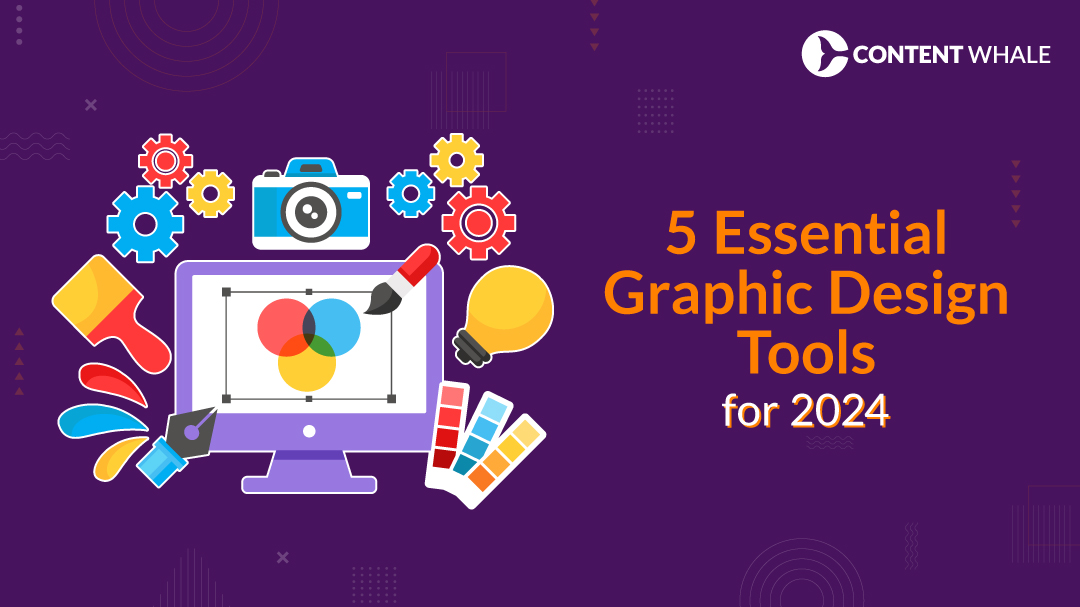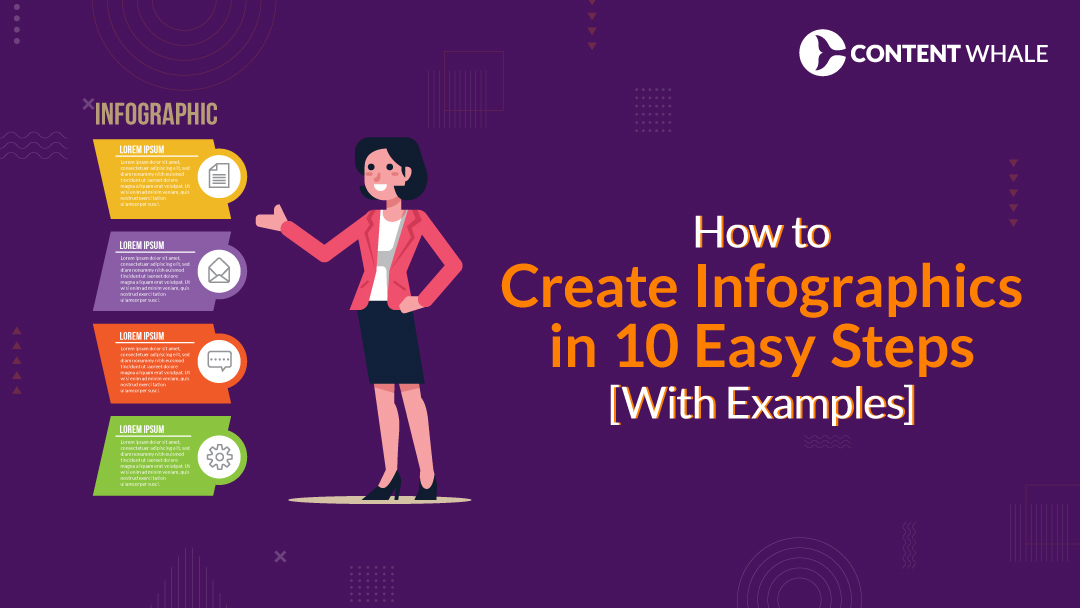2024 is going to be a game-changer for graphic design trends. If you’re serious about staying ahead of the curve, you need to pay attention. Why? Because graphic design styles in 2024 are evolving fast, blending cutting-edge tech with human creativity like never before. And if you’re not updating your approach, you’re risking falling behind.
Here’s the deal: AI in design is taking off, helping designers automate tasks, create custom visuals in seconds, and produce AI-driven designs that are not only efficient but incredibly innovative. But here’s the thing—you can’t just rely on tech. People still crave authenticity. That’s why hand-drawn elements, retro aesthetics, and even vintage fonts are making a massive comeback. These nostalgic designs connect with audiences on a deeper emotional level.
Bold, futuristic styles like 3D typography and neon color transitions are also dominating, offering brands a way to really stand out. You’ve got the tools—now it’s time to combine them with your creative processes to craft a unique visual identity that resonates.
So, what does this mean for you? Whether you’re running an agency or a solo freelancer, staying on top of these digital design trends is non-negotiable if you want to keep clients coming back. It’s time to start incorporating these styles into your projects to stay relevant, and more importantly, to stay profitable. Ready to elevate your designs in 2024? Let’s go.
| # | Trend Name | Why It’s So Popular | Who’s Using It |
| 1 | AI-Driven Design | AI tools allow for faster design processes, automation of repetitive tasks, and the generation of creative, unique visual elements. | Big tech brands like Nutella, Adobe, and startups |
| 2 | 3D Typography | It adds depth and realism to designs, making typography visually dynamic and engaging. Ideal for creating immersive brand experiences. | Brands focusing on digital products and advertisements |
| 3 | Bold Gradients | Bold gradients and vibrant color transitions grab attention and create energy in digital and print designs, revitalizing old styles. | Fashion brands, digital platforms, and creative agencies |
| 4 | Retro Aesthetics | Nostalgia for the 60s and 70s, combined with modern design, taps into consumer emotions and evokes a sense of familiarity. | Fashion, gaming, and entertainment industries |
| 5 | Anti-Design Aesthetic | This trend disrupts traditional design norms by embracing chaos and experimentation, appealing to rebellious, creative audiences. | Music festivals, creative industries, and youth-focused brands |
| 6 | Sustainable Design | Eco-conscious designs align with growing consumer demand for sustainability and environmental responsibility. | Eco-friendly brands, food packaging, and beauty products |
| 7 | Quirky Character Illustrations | These playful illustrations build emotional connections and are memorable, making brands feel more human and approachable. | Tech startups, artisanal brands, and creative agencies |
1. AI-Enhanced Design
AI in design is revolutionizing the creative process, and 2024 will see this trend soar to new heights. From automating routine tasks to inspiring new creative directions, AI is now an indispensable tool for designers. Here’s what’s making waves:
A) Key Benefits of AI in Design:
- Faster Design Iteration: Tools like Midjourney and DALL·E allow designers to create a wide range of mockups and visual variations instantly. This drastically speeds up the design process, giving designers more time to focus on refining ideas.
- Personalized Designs at Scale: AI can now generate designs based on user behavior, preferences, and data. Brands are leveraging these personalized visuals to engage audiences more deeply, making every user feel understood and valued.
- AI-Driven Typography: AI is reshaping typography too, offering customized fonts that suit specific projects, whether for branding trends or digital design projects. This feature allows for creative experimentation without compromising the brand’s identity.
B) The Balance Between AI and Human Creativity:
While AI tools are incredibly powerful, they can’t replace the emotional and nuanced touch that human designers bring. Creative authenticity is key in 2024, and designers must ensure that their work reflects a blend of technological efficiency and human-driven emotion. AI may handle the grunt work, but human creativity remains at the heart of impactful design.
2. Retro and Nostalgic Design
Retro and nostalgic design will continue to make a strong comeback in 2024, blending the familiar aesthetics of the past with modern twists. This trend resonates deeply with audiences who seek comfort in simpler, more recognizable visuals, providing a break from the overwhelming influx of digital innovation. Expect a heavy influence from the 60s, 70s, and 80s, including vintage fonts, retro patterns, and pixel art, giving brands a playful yet emotional appeal.
A) Key Elements of Retro and Nostalgic Design:
- Color Palettes: Faded pastels and bold, contrasting colors are key to evoking a sense of nostalgia. Look for muted shades mixed with vibrant neon hues, reminiscent of 70s retro vibes and 80s pop culture.
- Geometric Patterns and Bold Typography: The use of checkered prints, stripes, and geometric shapes like circles and squares from the mid-century will dominate in 2024. Paired with bold gradients and 3D typography, these elements add a modern twist to otherwise classic designs.
- Hand-Drawn Elements: Incorporating hand-drawn illustrations and textures allows for a more human, imperfect touch that connects with audiences on an emotional level. These tactile visuals make designs feel authentic and grounded.
- Maximalism and Minimalism: Both ends of the design spectrum—maximalist vintage and vintage minimalism—will thrive. Whether opting for visually rich compositions or stripped-back, retro-inspired minimalism, this trend embraces the best of both worlds.
3. Mixed Media and Hand-Drawn Elements
Mixed media and hand-drawn elements are gaining momentum in 2024, bringing a fresh, tactile feel to graphic design trends. This approach combines traditional art forms like hand-drawn illustrations, watercolor textures, and physical materials with digital techniques, creating unique and engaging compositions.
B) Key Elements of the Mixed Media Trend:
- Blending Traditional with Digital: Designers are now seamlessly merging hand-drawn elements and digital textures to create designs that feel both organic and modern. This technique offers a perfect blend of AI-driven design and the authenticity of human creativity, resulting in designs with depth and personality.
- Collage as a Central Focus: Collage is making a strong comeback as part of this trend. Mixing photography, illustrations, and textures allows designers to build layered, rich compositions that tell a visual story. This experimental layout approach breaks free from traditional, clean digital designs and invites creativity without limits.
- Tactile Visuals: The incorporation of hand-drawn elements in branding, packaging, and digital media provides a personal touch that audiences crave. Imperfections in lines, brushstrokes, and textures add an emotional connection to designs that are missing in purely digital formats.
4. Bold Gradients and Color Transitions
Bold gradients and color transitions are totally lighting up the design world in 2024! Designers are taking things to the next level, using these vibrant color blends to add depth, energy, and serious eye-catching appeal to everything from websites to branding.
A) What’s Hot in 2024?
- More Dynamic Gradients: Forget simple two-color transitions. This year, we’re talking bold gradients that blend multiple shades, creating smooth, flowing transitions that really pop. Whether it’s for backgrounds, text, or even logos, these gradients are all about grabbing attention and holding it.
- Mesh Gradients: A cool new trend is the mesh gradient—imagine a web of colors flowing together in a natural, almost futuristic way. It’s like color got creative freedom and went wild, giving designs that extra wow factor.
- Freeform Gradients: Designers love freeform gradients because they offer total freedom. Colors can be placed anywhere, blending in unexpected and artistic ways. It’s perfect for creating those futuristic color schemes we’re seeing more and more of.
B) Why Gradients Are Killing It:
Gradients aren’t just pretty to look at—they’re super functional, too. They pull your eye toward important elements and make text easier to read. In branding trends, they’re adding movement and personality, transforming flat designs into lively, dynamic pieces. Plus, the addition of neon color transitions can bring a jolt of energy to any design, making it feel fresh and modern.
5. 3D and Textured Typography
3D typography is a standout trend in graphic design for 2024, transforming text into captivating, visually dynamic elements. This trend goes beyond flat designs by adding depth and texture, making words leap off the screen and capturing attention. Whether used in branding, posters, or digital headers, 3D typography adds an extra layer of engagement.
A) Key Elements of 3D Typography:
- Depth and Realism: Designers are leveraging 3D typography to give text a sense of physicality, adding dimension and making it feel more immersive. This creates a striking effect, especially when used for headlines and promotional materials in digital design trends.
- Textures that Pop: Combining 3D effects with tactile surfaces such as wood, metal, or glass adds richness to the typography. The use of digital textures brings an interactive feel to the text, making it visually engaging and memorable.
- Playful and Bold Styles: From bubble-like letterforms to more geometric, angular shapes, designers are embracing bold and playful graphic design styles. This versatility allows 3D typography to be both fun and impactful, fitting well in tech branding or creative industries.
B) Why It Works:
3D typography offers a modern twist, infusing depth and texture into designs that would otherwise feel static. It’s particularly effective when paired with bold gradients or neon color transitions, helping to create a sense of movement and excitement. As part of the growing trend towards immersive design, 3D typography adds another dimension to branding, helping businesses create a more dynamic visual identity.
6. Anti-Design Aesthetic
The Anti-Design trend is gaining momentum in 2024, standing out as one of the boldest and most rebellious graphic design trends. It’s a deliberate move away from clean, structured aesthetics in favor of chaotic, unorthodox designs that break traditional rules. Anti-Design embraces experimentation with clashing fonts, distorted layouts, and unpredictable elements that create a raw and unconventional visual experience.
A) Key Features of Anti-Design:
- Chaotic Typography: Anti-design often features a mix of fonts with various weights and sizes, creating a jarring yet intriguing contrast. Texts are frequently rotated, overlaid, or spaced irregularly, pushing the boundaries of what’s considered “legible.”
- Maximalist Layouts: Instead of minimalism, maximalism reigns here. Designers are piling on elements, from intense patterns to neon color splashes, in a way that feels intentionally overdone. The result? A highly energetic and disruptive composition that grabs attention.
- Rejection of Convention: This aesthetic rejects traditional design principles such as symmetry and balance. Asymmetrical layouts, distorted visuals, and bold, unapologetic use of futuristic color schemes make anti-design stand out as an artistic rebellion.
B) Who’s Using It?
Anti-design is particularly effective for youth-focused brands, creative industries, and events such as music festivals or art exhibitions. It resonates with younger, rebellious audiences that value individuality, uniqueness, and nonconformity. Brands wanting to push the envelope can use this design trend to stand out and make a statement, tapping into the raw energy of experimental layouts.
7. Quirky Character Illustrations
Quirky character illustrations are taking center stage in graphic design trends 2024, offering a playful, exaggerated, and emotionally engaging style. These characters are often crafted with fluid, abstract shapes, long limbs, and vibrant colors, creating visuals that are fun, memorable, and distinct from traditional designs.
A) Why Quirky Characters Are Trending:
- Playfulness and Fun: These characters inject humor and lightheartedness into branding and advertising, making the designs feel more approachable and engaging. Their exaggerated features and whimsical forms offer a fresh way to connect with audiences, particularly younger demographics.
- Fluidity and Uniqueness: Drawing from abstract shapes and organic forms, quirky characters often appear fluid, defying conventional human proportions. This distinctive style makes them ideal for creating a strong visual identity in branding and marketing.
- Emotional Connection: Brands using quirky character illustrations can foster a closer relationship with their audience by appealing to emotions. These characters are often designed to evoke happiness, curiosity, or nostalgia, which helps create a bond between the brand and its customers.
B) Applications:
Quirky characters are especially popular in industries like tech startups, artisanal businesses, and creative agencies. They’re used in branding trends, product packaging, social media content, and digital ads, offering brands a way to stand out from the crowd. These designs, whether in 2D or 3D, bring a dynamic, creative touch that makes brand experiences more memorable.
Conclusion
As 2024 approaches, the world of graphic design is on the verge of an exciting transformation. Emerging graphic design trends reflect the growing influence of AI-driven design, nostalgia for retro aesthetics, and the integration of futuristic technologies like 3D typography. Designers are blending bold gradients with neon color transitions, while embracing the playful use of quirky character illustrations to create memorable and engaging brand visuals.
At Content Whale, we specialize in creating impactful, trend-driven content that aligns with the latest graphic design trends of 2024. Whether you need articles on AI in design, digital design trends, or showcasing retro aesthetics, our expert writers deliver high-quality, SEO-optimized content. Let us help you craft compelling narratives that resonate with your audience and enhance your brand’s digital presence!
FAQs
1. What are the key graphic design trends for 2024?
2024 brings a diverse set of graphic design trends focused on innovation and creativity. These include AI-driven design, bold gradients, 3D typography, hand-drawn elements, and a resurgence of retro aesthetics like pixel art. Sustainability is also a key focus, with eco-friendly designs leading the charge in many projects.
2. How will AI impact graphic design in 2024?
AI in design is set to revolutionize workflows by speeding up repetitive tasks like resizing images, suggesting design improvements, and even creating generative art. AI allows designers to focus more on creativity while handling routine tasks, making the design process faster and more efficient.
3. What is retro minimalism in graphic design?
Retro minimalism blends vintage elements, such as nostalgic design with clean, modern lines. Think vintage fonts combined with simple layouts, creating designs that evoke the past while feeling contemporary and uncluttered.
4. How can I incorporate 3D typography into my design projects?
To add 3D typography to your projects, focus on creating depth and texture. Tools like Adobe Illustrator or Photoshop can help you integrate 3D text into your designs, giving your work a more immersive, tactile feel. Combining bold gradients and neon color transitions with 3D text is especially effective for creating eye-catching visuals.
5. What industries are adopting quirky character illustrations?
Character illustrations are increasingly popular in tech startups, creative agencies, and artisanal brands. These playful, exaggerated visuals add personality and emotional depth, making brands more relatable and engaging to diverse audiences.





